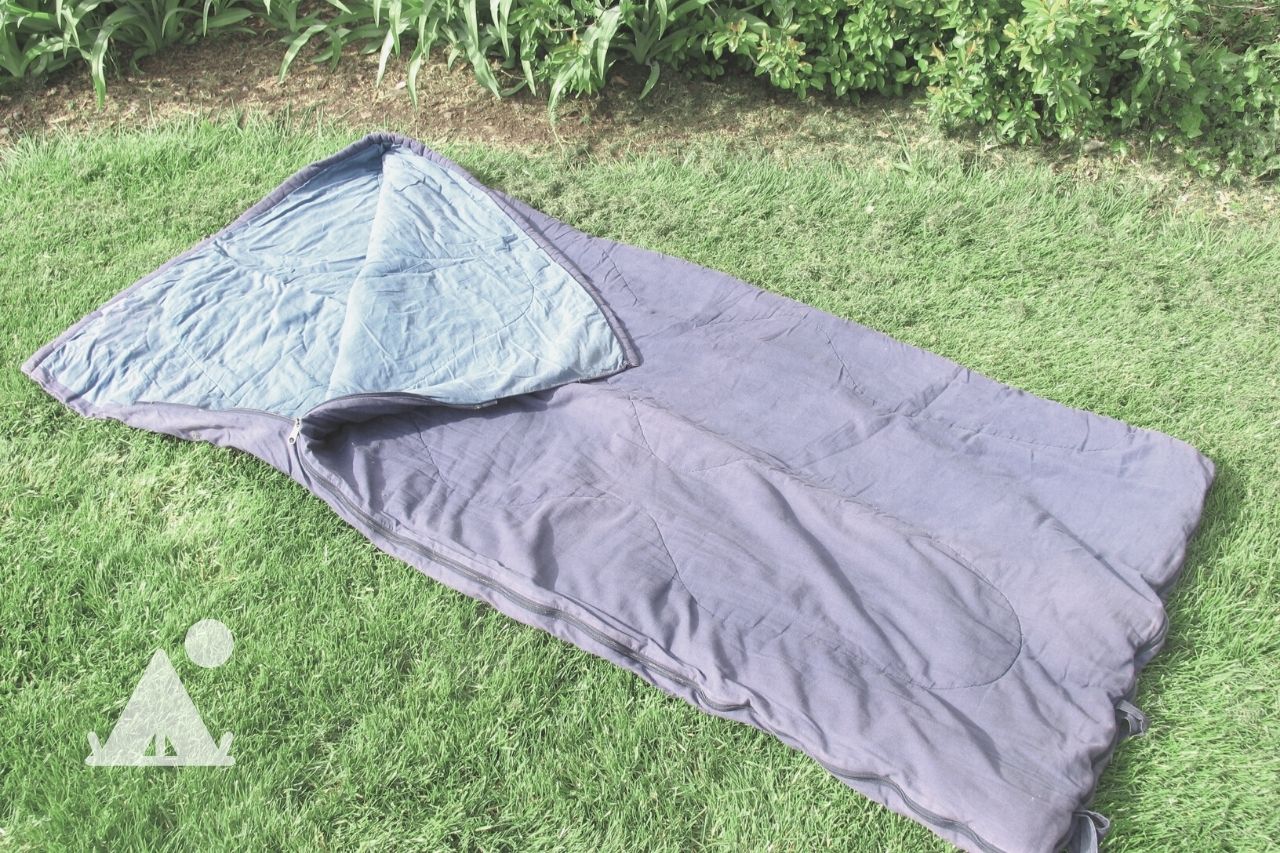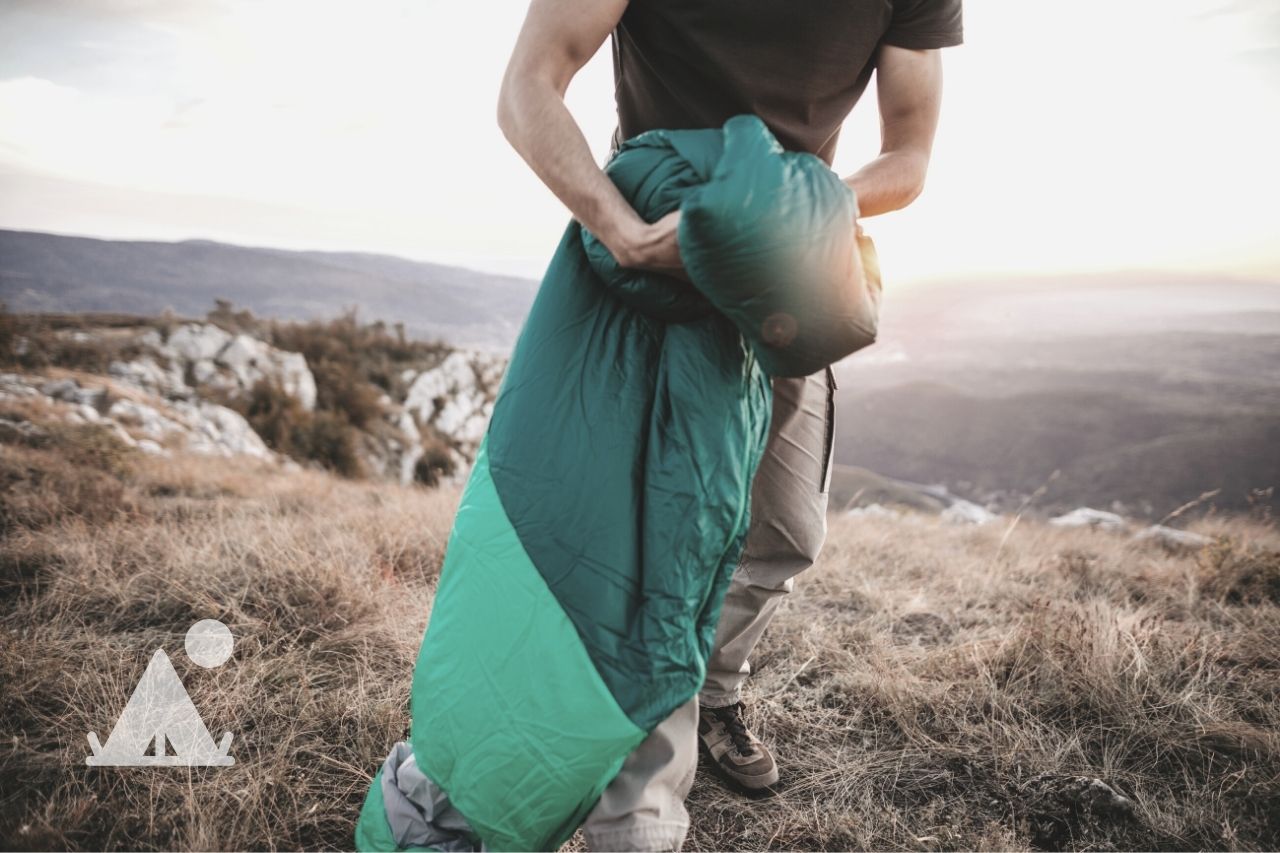Hi fellow campers. Do you go to sleep in a dry sleeping bag only to wake up cold and wet? That’s usually caused by dew or condensation. In this post, we have tips on how to keep dew off your sleeping bag and ensure you sleep dry and warm.
Why Is My Sleeping Bag Wet?

One of the worst experiences when camping is waking up in a cold and drenched sleeping bag. Figuring out why it’s happening will help you find a way to stop it.
Unless you had an accident in the middle of the night, it rained inside the tent or you somehow spilled water inside the sleeping bag, a wet sleeping bag is always caused by condensation (the resulting moisture is what’s called dew).
Condensation happens when warm air interacts with a colder surface. This causes water vapor in the air to condense into liquid water, which is dew.
This happens at a certain temperature called dew point. The specific dew point temperature depends on altitude and humidity.
So when you wake up to dew on or inside your sleeping bag, it is because of condensation.
But what factors make it more likely for condensation to happen? Here are six along with the best solutions for each.
1. Poor ventilation
In many cases, poor or inadequate ventilation is the main cause of dew on the sleeping bag. You may also notice moisture on the inside of the tent as well as on surfaces of objects in the tent.
If there’s no airflow in and out of the tent (or your vehicle, for car campers), warm air gets stuck inside. When it meets cold surfaces, like the shell of your sleeping bag, it leaves dew behind.
How to improve ventilation in your tent
- If it’s not raining or snowing, roll back the rain fly. You can also try only partially opening the rain fly if you want to retain some protection. Here’s a video showing one way to adjust your rain fly to allow more air in.
- Leave the vestibule door open or half open.
- Some tents have mesh screens that allow air flow and light, while keeping bugs out. Make sure they stay open at night.
- Get a tent that has dedicated condensation vents.
- Add a small portable fan to the tent. It’ll help move air around and improve ventilation.
2. High Humidity
If there’s a lot of moisture in the air, it’ll inevitably leave dew all over including on your sleeping bag.
It’s all about location. Some places are more humid than others and there’s not much you can do about it.
However, some specific camping locations can be more humid than the surrounding area.
If you camp next to a river or lake, the views and sounds will be nice, but you are likely to face problems with dew in the tent and on the sleeping bag. Air close to a water body is more humid.
The same is true if you camp in a valley where cold and water-laden air settles.
How to choose a low-humidity camping site
- Avoid camping near bodies of water such as rivers, waterfalls, lakes, and dams.
- Carry a portable hygrometer (most also measure temperature) with you when camping. It’ll make it easier to choose a spot with low humidity.
- Choose locations that are higher up. These have better airflow and the air has less moisture. Avoid valleys and low lying areas.
- When possible, camp under a tree. You’ll experience less condensation since most of it happens on the leaves and branches.
3. Moisture From Inside The Tent
Leaving wet clothes and gear inside the tent makes the air more humid. As the temperatures go down at night, moisture in the air settles on your sleeping bag.
Cooking or boiling water inside the tent also adds a lot of moisture to the air, and it’ll eventually condensate on surfaces like the sleeping bag.
How to reduce moisture inside the tent
- If you have wet clothes or equipment, put them in the vestibule and open all windows and vents to make sure the moisture goes out.
- Do not cook inside the tent, at least not in the main tent area. If you are camping in the snow or rain and have to cook inside, do it in the vestibule and maintain good ventilation.
- Get a camping dehumidifier to reduce the amount of humidity inside the tent. There are plenty of portable electric dehumidifiers that you can run off a portable power station like Jackery. Or you can use a non-electric dehumidifier with charcoal or silica gel beads.
4. Moisture From Inside The Sleeping Bag
The worst kind of condensation is the one that occurs inside the sleeping bag. It leaves the sleeping bag feeling drenched and reduces its warmth, especially if it is a down sleeping bag.
Sleeping in wet clothes and breathing inside the sleeping bag are the two most common causes of moisture inside the sleeping bag.
How to keep the inside of your sleeping bag dry
- Do not burrow your head inside the sleeping bag. Your breath has a lot of moisture, which will condensate inside the sleeping bag. If it’s cold, wear warm headgear and keep your head outside the sleeping bag.
- Always change into a dry set of clothing when going to sleep. Even if the clothes you’ve spent the day in feel dry, they could have moisture you can’t feel. Alternatively, sleep nude or in thermal wear.
- Use a sleeping bag liner to absorb body sweat. This keeps air inside the bag from getting too humid.
5. Sleeping Too Warm
Yes, you should try to sleep warm when camping. But there’s something like sleeping too warm.
This causes two problems. You sweat more, creating condensation inside the sleeping bag. Two, the air around and inside the sleeping bag gets warmer and condensates on the cooler sleeping bag.
What’s the best sleeping temperature in a sleeping bag?
- Get a sleeping bag that’s rated for the temperature of the area you’ll be camping in. You can even try sleeping in one that’s rated at a slightly higher temperature to ensure you sleep cool.
- Do not over-layer your sleepwear. With a good sleeping bag, long underwear or thermals are enough to sleep comfortably.
- Be careful not to sleep too cold either. It’ll create a dew point inside the sleeping bag, causing internal condensation which will cause the filling to clump.
6. Moisture From Under The Sleeping Bag
A common complaint among campers is dew under the sleeping bag. If you see moisture only under the sleeping bag, it’s probably coming from whatever is under you.
If you’ve put your sleeping bag directly on grass, that’s a big mistake. Dew collects easily on grass, and will transfer to the bottom of the sleeping bag.
Also, because the ground is cold, it also makes the bottom of the sleeping bag cold, which makes it easier for dew to collect on it.
If you have a sleeping pad under the sleeping bag, good thinking. But it can also cause dew if it’s one of those pads that you inflate with your mouth.
Your moisture-laden breath inside the pad easily condensates, leaving moisture between the top of the pad and bottom of the sleeping bag.
How to keep the bottom of your sleeping bag dry
- Lay the sleeping bag on a mat or pad, not directly on the ground.
- If you are using an inflatable sleeping pad, fill it using a pump, not your mouth.
Can Dew Damage Your Sleeping Bag?

Exposure to moisture will not damage your sleeping bag, unless you store the bag without drying it out.
However, moisture from condensation can reduce your sleeping bag’s insulation. It is especially bad for down sleeping bags.
The down filling clumps and can no longer trap air to keep you warm. Even treated hydrophobic down is susceptible to clumping when there’s a lot of dew.
If you plan to camp in a high-humidity area or in the rain, a synthetic sleeping bag has better water resistance. The filling maintains its loft and insulation.
What To Do If Your Sleeping Bag Is Wet?
If your sleeping bag has collected some dew during the night, air it outside first thing when you wake up. Do not stuff it in the sack while wet.
As long as it is not soaking wet, it should dry fairly quickly. If you have a down sleeping bag, turn it inside out to dry all the moisture.
When you get home, air the sleeping bag for several hours (inside or outside away from direct sunlight) before storing it.
If the sleeping bag is really wet, pop it into a commercial size dryer on low heat and with a couple of tennis balls to fluff it up.